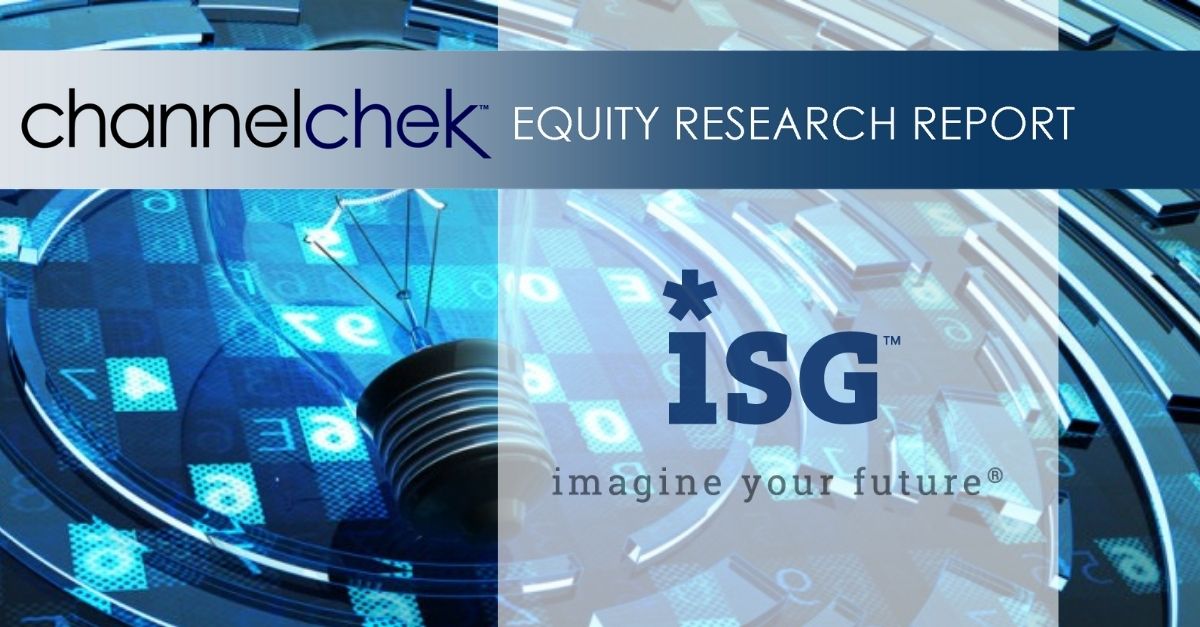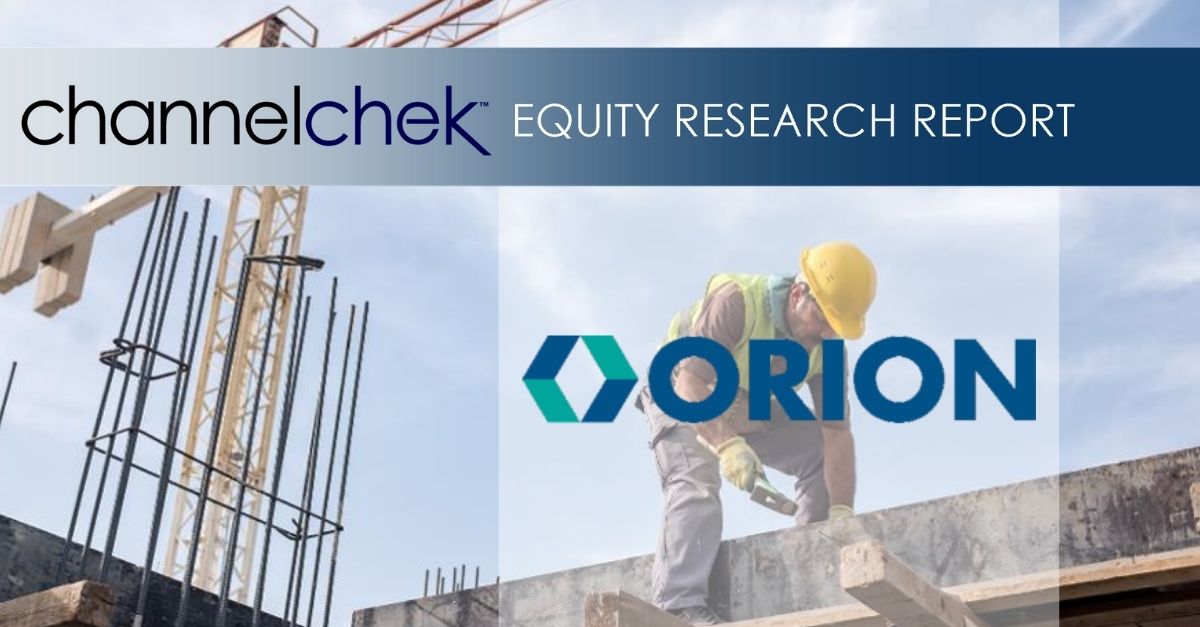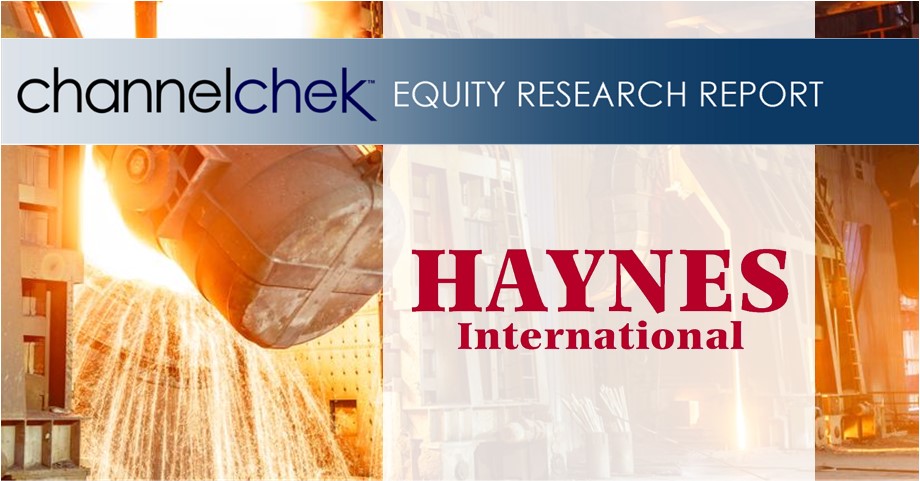Research News and Market Data on ACCO
02/22/2024
DOWNLOAD(OPENS IN NEW WINDOW)
Company Exceeds Full Year 2023 Outlook
Full Year
- Reported net sales of $1.833 billion, with gross margin expanding 420 basis points
- Operating income of $45 million; adjusted operating income grew 17% to $205 million
- Loss per share of $(0.23); adjusted EPS of $1.09, above the Company’s outlook
- Net operating cash flow improved $51 million, generated adjusted free cash flow of $118 million
- Reduced total debt by $88 million with a consolidated net leverage ratio of 3.4x at year-end
LAKE ZURICH, Ill.–(BUSINESS WIRE)– ACCO Brands Corporation (NYSE: ACCO) today reported financial results for the fourth quarter and fiscal year ended December 31, 2023.
“I am pleased to report that our fourth quarter financial performance, including our reported net sales and adjusted EPS and free cash flow, was better than expected. During the year, we successfully executed against our 2023 priorities and implemented our previously announced restructuring plans, which enabled us to significantly expand our gross margin, deliver strong free cash flow, and reduce our consolidated net leverage ratio to 3.4x at the end of 2023. We believe our achievement of these results against a challenging demand environment is a testament to the solid execution of our team and our geographically diverse portfolio of leading brands. The restoration of our gross margins and improved cash flows enables us to make investments that position the Company for long-term growth,” stated ACCO Brands’ President and Chief Executive Officer, Tom Tedford.
Fourth Quarter Results
Net sales declined 2.2 percent to $488.6 million from $499.4 million in 2022. Comparable sales fell 4.6 percent, as favorable foreign exchange increased sales by $12.2 million, or 2.4 percent. Both reported and comparable sales declines reflect softer demand due to a weaker macroeconomic environment, which has also led to lower global demand for our technology accessories. These factors more than offset growth in our International segment, driven by the recovery of back-to-school sales in Latin America.
Operating loss was $52.8 million versus operating income of $35.6 million in 2022, primarily due to a non-cash goodwill impairment charge of $89.5 million related to the North America segment. In 2023, we recognized restructuring charges of $20.9 million, compared to $7.3 million in the prior-year period, with the increase related to our continuing footprint rationalization and cost reduction programs. Adjusted operating income increased 30.6 percent to $68.3 million from $52.3 million in the prior-year period. This increase reflects recovery of gross margin from the effect of cumulative global price increases and cost reduction actions, as well as moderating input costs. This was partially offset by higher SG&A expense, primarily due to an increase in incentive compensation compared to the prior year.
The Company reported a net loss of $59.4 million, or $(0.62) per share, compared with prior-year net income of $18.8 million, or $0.20 per share. The net loss is primarily due to the non-cash goodwill impairment charge of $89.5 million, with no associated tax benefit, as well as the higher restructuring charges noted above. In addition, there was a favorable change in discrete tax items of $21.8 million, largely related to recent tax legislation in both Brazil and the United States. Adjusted net income was $37.5 million, or $0.39 per share, compared with $30.5 million, or $0.32 per share in 2022. The increase in adjusted net income was due to the items noted above in adjusted operating income, partially offset by higher interest and non-operating pension expenses.
Full Year Results
Net sales decreased 5.9 percent to $1.83 billion from $1.95 billion in 2022. Favorable foreign exchange increased sales by $11.3 million, or 0.6 percent. Comparable sales decreased 6.5 percent. Both reported and comparable sales declines reflect the challenging macroeconomic environment, especially in North America and EMEA, and lower than anticipated return to office trends, as well as tight inventory management by our customers in North America. Sales of technology accessories were most negatively impacted. This more than offset the benefit of cumulative price increases across all segments, and volume growth in Latin America.
Operating income was $44.7 million compared to $34.8 million in 2022. The increase in operating income is primarily due to a lower non-cash goodwill impairment charge of $89.5 million versus the $98.7 million recorded in 2022. In 2023, we recorded restructuring charges of $27.2 million compared to $9.6 million in 2022, with the increase related to our continuing footprint rationalization and cost reduction programs. 2022 includes a benefit related to the change in value of the PowerA contingent earnout of $9.0 million, which did not repeat in 2023. Adjusted operating income increased to $204.8 million from $175.8 million in 2022. Both reported and adjusted operating income increases reflect the benefit of cumulative global price increases and cost reduction initiatives, partially offset by negative fixed cost leverage and higher SG&A expense, primarily due to increased incentive compensation.
Net loss was $21.8 million, or $(0.23) per share, compared with a net loss of $13.2 million, or $(0.14) per share, in 2022. The net losses were primarily related to the items noted above in operating income. In 2023, there was a significant increase in discrete tax benefits largely related to recent tax legislation in both Brazil and the United States, partially offset by reduced operating tax gains. Adjusted net income was $105.6 million compared with $101.0 million in 2022, and adjusted earnings per share were $1.09 per share compared with $1.04 per share in 2022. The increase in adjusted net income was due to the items noted above in adjusted operating income, partially offset by higher interest and non-operating pension expenses.
Capital Allocation and Dividend
For the full year, the Company significantly improved its operating cash flow to $128.7 million versus $77.6 million in the prior year, driven primarily by improved profits and working capital. Adjusted free cash flow in 2023 improved by $40.0 million to $117.5 million versus $77.5 million in 2022. Adjusted free cash flow in 2022 excludes the contingent earnout payment. The Company’s consolidated leverage ratio as of December 31, 2023 was 3.4x.
On February 16, 2024, ACCO Brands announced that its board of directors declared a regular quarterly cash dividend of $0.075 per share. The dividend will be paid on March 27, 2024 to stockholders of record at the close of business on March 15, 2024.
Restructuring and Cost Savings Program
On January 30, 2024, the Company announced a multi-year restructuring and cost savings program, with anticipated annualized pre-tax cost savings of at least $60 million. The program incorporates initiatives to simplify and delayer the Company’s operating structure and reduce costs through headcount reductions, supply chain optimization, global footprint rationalization, and better leveraging the Company’s sourcing capabilities. As a result of these actions, the Company will improve its speed of execution and bring key leaders closer to customers.
In connection with the program, the Company recognized pre-tax restructuring charges of $20.9 million in the fourth quarter of 2023, related to costs associated with the headcount reductions, as well as the closing of its Sidney, NY manufacturing facility. This was the fourth facility closure announced in 2023.
New Operating Segments
As previously announced, the Company will be implementing a new operating model, consolidating its three reportable segments into two reportable segments. The Americas reporting segment will include the U.S., Canada, Brazil, Mexico and Chile and the International reporting segment will include EMEA, Australia, New Zealand, and Asia. The Company will report on this basis for the fiscal year commencing January 1, 2024.
Business Segment Results
ACCO Brands North America – For the full year, North America net sales of $887.2 million decreased 11.1 percent from $998.0 million in 2022, and comparable sales declined 10.7 percent. Fourth quarter segment net sales of $199.0 million and comparable sales of $199.1 million both decreased 11.8 percent versus the prior year. Both full-year and fourth quarter reported and comparable sales decreases reflect softer demand due to a weaker macroeconomic environment, lower than anticipated return to office trends and retailers maintaining lower inventory levels, which resulted in lower demand for technology accessories and office products. This more than offset the benefit of cumulative pricing actions.
In North America, full year operating loss was $5.9 million versus an operating loss of $4.9 million in 2022. In 2023, we recorded a $89.5 million non-cash goodwill impairment charge compared to the $98.7 million recorded in the prior year. In 2023, restructuring charges were $16.7 million, an increase from the $5.3 million in 2022, largely related to our cost reduction and productivity programs. Adjusted operating income was $122.4 million, up from $121.5 million in the prior year, as benefits of the cumulative effect of pricing and cost actions, were largely offset by lower volume and negative fixed cost leverage.
ACCO Brands EMEA – Full year net sales in the EMEA segment of $547.2 million decreased 5.7 percent from $580.3 million in 2022. Favorable foreign exchange increased sales by 1.0 percent. Comparable sales declined 6.7 percent. Fourth quarter segment net sales of $159.1 million increased 2.0 percent versus the prior year’s net sales of $156.0 million. Favorable foreign exchange increased sales by 4.6 percent for the quarter. Comparable sales of $152.0 million decreased 2.6 percent versus the prior-year period as volume declines moderated sequentially in the quarter. Both full year and fourth quarter comparable sales declines reflect reduced demand, especially for technology accessories, due to a weaker macroeconomic environment. This more than offset the benefit of cumulative pricing actions.
The EMEA segment posted full-year operating income of $38.7 million compared with operating income of $21.7 million in 2022. In 2023, we recorded restructuring charges of $8.9 million versus $3.4 million in 2022, with the increase related to our ongoing footprint rationalization and cost reduction programs. Adjusted operating income was $62.5 million, up from $37.0 million in 2022. The increases in both reported operating income and adjusted operating income reflect recovery of gross margins from price increases and cost savings actions, more than offsetting negative fixed cost leverage and higher incentive compensation.
ACCO Brands International – International segment net sales of $398.4 million for the full year increased 7.9 percent from $369.3 million in 2022. Favorable foreign exchange increased sales by 2.6 percent. Comparable sales were $388.7 million, up 5.3 percent versus the prior year. Fourth quarter segment net sales of $130.5 million increased 10.9 percent versus the prior year’s net sales of $117.7 million. Favorable foreign exchange increased sales by 4.4 percent for the quarter. Comparable sales were $125.3 million an increase of 6.5 percent versus the year-ago period. Both full year and fourth quarter reported and comparable sales increases reflect stronger pricing and volume growth in Latin America, more than offsetting the impact of weaker economic conditions in Australia and Asia and overall lower demand for technology accessories.
Operating income for the full year was $60.7 million, an increase from $50.5 million in 2022. Adjusted operating income of $68.1 million increased from $58.3 million in the prior year. The increase in both operating and adjusted operating income were primarily due to the cumulative benefit of pricing and cost actions, somewhat offset by higher go-to-market spending, people costs and incentive compensation.
2024 Outlook
“We are taking actions to reposition the company for long-term, sustainable, profitable growth. In January, we announced a multi-year restructuring and cost savings program, to reset our cost structure. The program is expected to deliver at least $60 million in annual cost savings once fully implemented and will better leverage our global platform and leading brands. We continue to focus on our margin profile by exiting low margin business and better leveraging our sourcing and supply chain infrastructure. These actions will enable us to accelerate investments in new product development, innovation, and other growth initiatives, while increasing our profitability and cash flow, leading to improved shareholder value,” concluded Mr. Tedford.
For the full year, we expect reported sales to be down in the range of 2.0% to 5.0%. The Company’s sales outlook reflects the uncertain demand environment for its categories. Full year adjusted EPS is expected to be within a range of $1.07 to $1.11. The Company expects 2024 free cash flow to grow to at least $120 million and to end the year with a consolidated leverage ratio of approximately 3.0x to 3.2x.
In the first quarter, we expect reported sales to be down in the range of 6.5% to 8.0% and adjusted EPS within a range of $0.01 to $0.04. Seasonally, sales can shift between first and second quarter due to the timing of back-to-school shipments in North America.
Webcast
At 8:30 a.m. ET on February 23, 2024, ACCO Brands Corporation will host a conference call to discuss the Company’s fourth quarter and full year 2023 results. The call will be broadcast live via webcast. The webcast can be accessed through the Investor Relations section of www.accobrands.com . The webcast will be in listen-only mode and will be available for replay following the event.
About ACCO Brands Corporation
ACCO Brands, the Home of Great Brands Built by Great People, designs, manufactures and markets consumer and end-user products that help people work, learn, and play. Our widely recognized brands include AT-A-GLANCE®, Five Star®, Kensington®, Leitz®, Mead®, PowerA®, Swingline®, Tilibra® and many others. More information about ACCO Brands Corporation (NYSE: ACCO) can be found at www.accobrands.com .
Non-GAAP Financial Measures
In addition to financial results reported in accordance with generally accepted accounting principles (GAAP), we have provided certain non-GAAP financial information in this earnings release to aid investors in understanding the Company’s performance. Each non-GAAP financial measure is defined and reconciled to its most directly comparable GAAP financial measure in the “About Non-GAAP Financial Measures” section of this earnings release.
Forward-Looking Statements
Statements contained herein, other than statements of historical fact, particularly those anticipating future financial performance, business prospects, growth, strategies, business operations and similar matters, results of operations, liquidity and financial condition, and those relating to cost reductions and anticipated pre-tax savings and restructuring costs are “forward-looking statements” within the meaning of the Private Securities Litigation Reform Act of 1995. These statements are based on the beliefs and assumptions of management based on information available to us at the time such statements are made. These statements, which are generally identifiable by the use of the words “will,” “believe,” “expect,” “intend,” “anticipate,” “estimate,” “forecast,” “project,” “plan,” and similar expressions, are subject to certain risks and uncertainties, are made as of the date hereof, and we undertake no duty or obligation to update them. Forward-looking statements are subject to the occurrence of events outside the Company’s control and actual results and the timing of events may differ materially from those suggested or implied by such forward-looking statements due to numerous factors that involve substantial known and unknown risks and uncertainties. Investors and others are cautioned not to place undue reliance on forward-looking statements when deciding whether to buy, sell or hold the Company’s securities.
Our outlook is based on certain assumptions, which we believe to be reasonable under the circumstances. These include, without limitation, assumptions regarding the impact of inflation and global geopolitical and economic uncertainties and fluctuations in foreign currency exchange rates; and the other factors described below.
Among the factors that could cause our actual results to differ materially from our forward-looking statements are: our ability to successfully execute our restructuring and cost savings plans and realize the anticipated benefits of these plans and our other ongoing productivity initiatives; our ability to obtain additional price increases and realize longer-term cost reductions; the ongoing impact of the COVID-19 pandemic; a relatively limited number of large customers account for a significant percentage of our sales; issues that influence customer and consumer discretionary spending during periods of economic uncertainty or weakness; risks associated with foreign currency exchange rate fluctuations; challenges related to the highly competitive business environment in which we operate; our ability to develop and market innovative products that meet consumer demands and to expand into new and adjacent product categories that are experiencing higher growth rates; our ability to successfully expand our business in emerging markets and the exposure to greater financial, operational, regulatory, compliance and other risks in such markets; the continued decline in the use of certain of our products; risks associated with seasonality; the sufficiency of investment returns on pension assets, risks related to actuarial assumptions, changes in government regulations and changes in the unfunded liabilities of a multi-employer pension plan; any impairment of our intangible assets; our ability to secure, protect and maintain our intellectual property rights, and our ability to license rights from major gaming console makers and video game publishers to support our gaming accessories business; continued disruptions in the global supply chain; risks associated with inflation and other changes in the cost or availability of raw materials, transportation, labor, and other necessary supplies and services and the cost of finished goods; risks associated with outsourcing production of certain of our products, information technology systems and other administrative functions; the failure, inadequacy or interruption of our information technology systems or its supporting infrastructure; risks associated with a cybersecurity incident or information security breach, including that related to a disclosure of personally identifiable information; our ability to grow profitably through acquisitions; our ability to successfully integrate acquisitions and achieve the financial and other results anticipated at the time of acquisition, including planned synergies; risks associated with our indebtedness, including limitations imposed by restrictive covenants, our debt service obligations, and our ability to comply with financial ratios and tests; a change in or discontinuance of our stock repurchase program or the payment of dividends; product liability claims, recalls or regulatory actions; the impact of litigation or other legal proceedings; our failure to comply with applicable laws, rules and regulations and self-regulatory requirements, the costs of compliance and the impact of changes in such laws; our ability to attract and retain qualified personnel; the volatility of our stock price; risks associated with circumstances outside our control, including those caused by public health crises, such as the occurrence of contagious diseases, severe weather events, war, terrorism and other geopolitical incidents; and other risks and uncertainties described in “Part I, Item 1A. Risk Factors” in our Annual Report on Form 10-K for the year ended December 31, 2022, and in other reports we file with the Securities and Exchange Commission.
Click to read the the full release: ACCO Brands Reports Fourth Quarter and Full Year 2023 Results and Provides Outlook for 2024
Christopher McGinnis
Investor Relations
(847) 796-4320
Kori Reed
Media Relations
(224) 501-0406
Source: ACCO Brands Corporation

















